
The Breed History
Like the Pharaoh hound, these dogs are ancient and originate in
Egypt. First records date to about 3100 BC. Like the Pharaoh hound,
the claim is that this dog is the source for the image of Anubis,
the canine deity that watches over the souls of the departed. From
Egypt, the Phoenicians took these dogs to the Mediterranean Isle of
Ibiza, one of the Balearic Islands off of Spain by about 800 BC. The
breed became extinct in Egypt. They were common also in mainland
Spain. First American imports date to the year 1956. AKC registry
first accepted this breed in 1979.
Breeding for Function
As Pharaoh's dogs, they were keen hunting partners and
companions. They hunted by both sight and sound. Later, in the Isle
of Ibiza, they were selected based on their rabbit hunting ability, and
also for their ability to be sustained on a small amount of food. They
were valued as watchdogs. Good sturdy constitution and physical
health is highly valued, so breeding programs selected only the
most vigorous specimens. Today, they are often shown in tracking,
obedience and lure coursing and are valued as companion dogs.
Physical Characteristics
Height at Withers: female 22.5-26" (57-66 cm), male 23.5-27.5"
(60-70 cm).
Weight: females 45 lb (20.5 kg), males 50 lb (22.5 kg).
Coat: Two types of coat exist-short and wirehaired. The latter
may carry a prominent moustache, though the coat is still only
1.5-3" (3.5-7.5 cm) in length. White, red, or a mixture of the two is
accepted. A red color varies from deep rich red to light yellow-red.
Longevity: 11-14 years
Points of Conformation: Very chiseled and lithe, these strong
athletic dogs are noted for their large pricked up pointed ears and
greyhound-type stature. Muscle mass is lean. The head is shaped
like a long cone with a minimal stop, they possess a prominent
occipital protuberance, and no facial wrinkles are present. Nose and
lip margins are flesh colored and the nose is prominent. The long,
slender neck is slightly arched, the topline is level with a gradual
drop off to the tail at the croup. The thorax is moderately deep,
breastbone prominent, and ribs only slightly sprung. The abdomen
is well tucked up, and the thin, low-set tail reaches to the tarsus
and may be curved, ring or saber shaped. The tail is carried high
while in action. Limbs are straight and long, fine-boned, and the
hare-type feet have thick pads and white nails. Characteristically,
there is lots of interdigital hair. The gait is springy, fairly high, and
appears effortless. This breed has the ability to jump high and wide,
and is as fast as any sight hounds. The eyes are small, oblique and
amber to caramel in color. The ears may rest folded when the dog is
relaxed. Front dewclaws may be removed.
Recognized Behavior Issues and Traits
Reported breed characteristics include: Active, enjoy human
companionship, good with children and other dogs, stable
temperament, loyal, high trainability, aloof with strangers, alarm
barker, groom themselves like a cat, off leash in a fenced enclosure
only; can jump up to 6' so fence should be sturdy and high. Good
trainability, adaptable, high exercise needs, but low activity around
the house. Low grooming needs, good in country or city settings.
Normal Physiologic Variations
Sight hounds have lower normal ranges for T4 and T3
concentrations compared to other breeds.
Drug Sensitivities
Anesthesia: Sight hounds require particular attention during
anesthesia. Their lean body conformation with high surface-areato-
volume ratio predisposes them to hypothermia during
anesthesia. Impaired biotransformation of drugs by the liver
results in prolonged recovery from barbiturate and thiobarbiturate
intravenous anesthetics. Propofol, and ketamine/diazepam
combination are recommended induction agents.
Inherited Diseases
Hip Dysplasia: Polygenically inherited trait causing degenerative
joint disease and hip arthritis. OFA reports 2.8% affected.
Elbow Dysplasia: Polygenically inherited trait causing elbow
arthritis. Too few Ibizan Hounds have been screened by OFA to
determine an accurate frequency.
Patella Luxation: Polygenically inherited laxity of patellar
ligaments, causing luxation, lameness, and later degenerative joint
disease. Treat surgically if causing clinical signs. Too few Ibizan
Hounds have been screened by OFA to determine an accurate
frequency.
Axonal Dystrophy: A rare, fatal, autosomal recessive disorder,
causing an uncoordinated, spastic gait. Affected dogs initially
present between five and sixteen weeks of age with a lack of
balance, spasticity, and weaving, often worse in the hind limbs.
Some dogs have stressful episodes manifested by high fever,
recumbency, stiffening of the limbs, and seizures. Variable
progression of clinical signs necessitates euthanasia by 5 to 24
months of age. The disorder is caused by a dying off of neurons in
the spinal cord and brain. No genetic test is available.
Disease Predispositions
Hypothyroidism: Inherited autoimmune thyroiditis. 6.3% positive
for thyroid autoantibodies based on testing at Michigan State
University. (Ave. for all breeds is 7.5%).
Persistent Pupillary Membranes: Strands of fetal remnant
connecting; iris to iris, cornea, lens, or involving sheets of tissue.
The later three forms can impair vision, and dogs affected with
these forms should not be bred. Identified in 6.09% of Ibizan
Hounds CERF examined by veterinary ophthalmologists between
2000-2005.
Cataracts: Nuclear intermediate and punctate cataracts
predominate in the breed. Identified in 3.91% of Ibizan Hounds CERF
examined by veterinary ophthalmologists between 2000-2005. CERF
does not recommend breeding any Ibizan Hound with a cataract.
Allergies: Inhalant or food allergy. Presents with pruritis (itching)
and pyotraumatic dermatitis (hot spots). Reported as a problem in
the breed on the IHCUS website.
Idiopathic Epilepsy (Inherited Seizures): Generalized or partial
seizures. Control with anti-seizure medication. Reported as a
problem in the breed on the IHCUS website. Unknown mode of
inheritance.
Retinal Dysplasia: Focal retinal dysplasia/folds are recognized in
the breed. Can casue retinal detachment and blindness. Reported in
1.30% of Ibizan Hounds CERF-examined by veterinary ophthalmologists
between 2000-2005.
Deafness: Congenital deafness can be unilateral of bilateral.
Diagnosed by BAER testing. Reported to occur in the breed by
Strain, and the IHCUS.
Brachygnathism, Cardiomyopathy, Elongated Soft Palate,
Oligodontia, Polydontia, and Prognathism are reported.
Isolated Case Studies
Arteriovenous Fistula: A nine-year-old male Ibizan hound had a
network of large tortuous pulsating blood vessels on the prepuce
that enlarged gradually over a five month period.
Genetic Tests
Tests of Genotype: none
Tests of Phenotype: CHIC Certification: Required testing includes
hip radiographs, CERF eye examination, brainstem audio-evoked
response (BAER) test for deafness, and thyroid profile including
autoantibodies. (See CHIC website; www.caninehealthinfo.org).
Recommend elbow radiographs, patella evaluation, and cardiac
evaluation.
Miscellaneous
- Breed name synonyms: Galgo Hound, Ibizan, Podenco Ibicenco,
Ca Ebisenc, Balaeric Dog, Charnique (Fr.).
- Registries: AKC-P, UKC-P, CKC, KCGB (Kennel Club of Great
Britain), ANKC (Australian National Kennel Club), NKC (National
Kennel Club).
- AKC rank (year 2008): 134 (146 dogs registered)
- Internet resources: Ibizan Hound Club of the United States:
www.ihcus.org
Photo Gallery of Breed - Ibizan Hound - Dog Breed
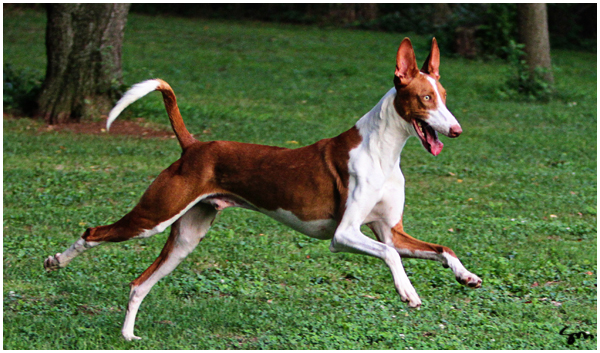
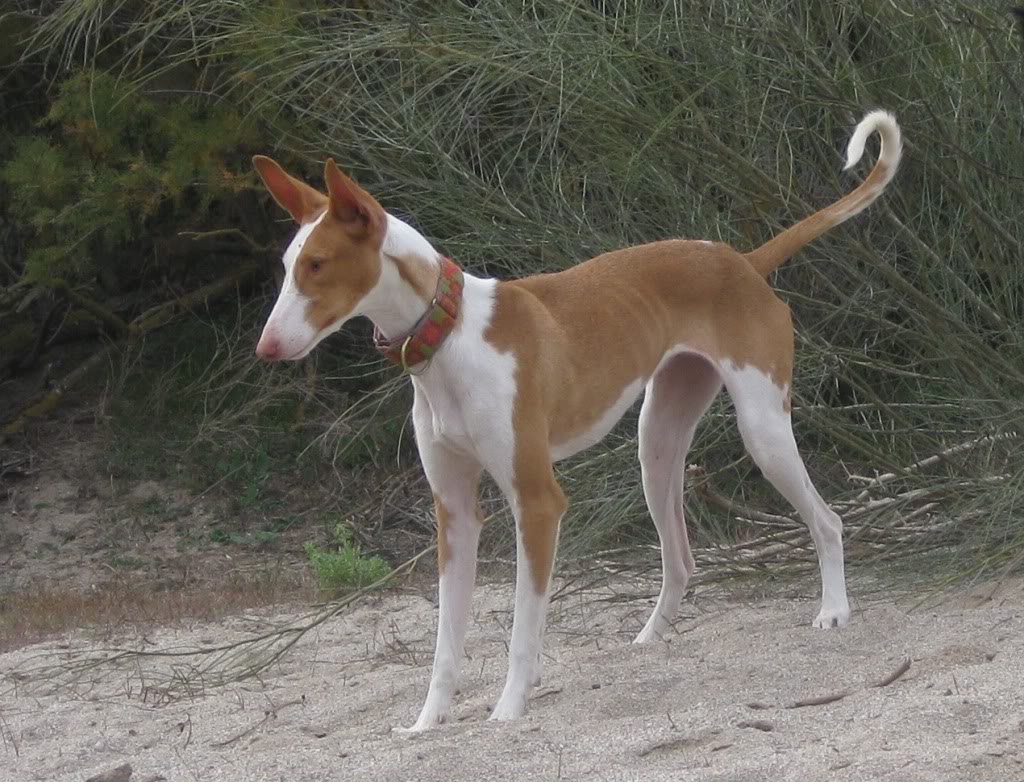


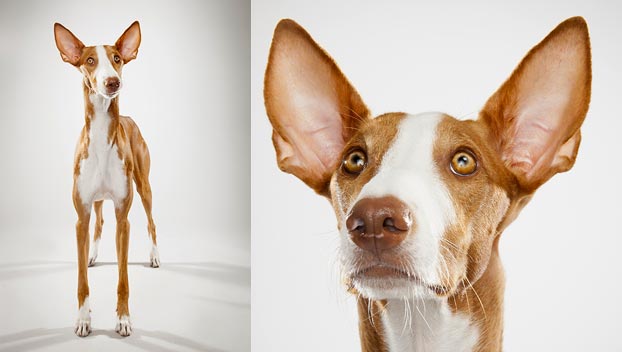
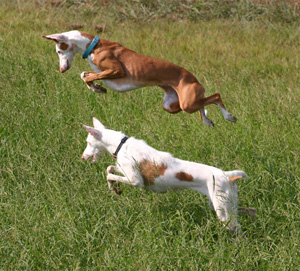
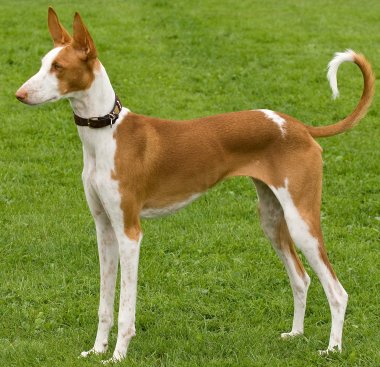
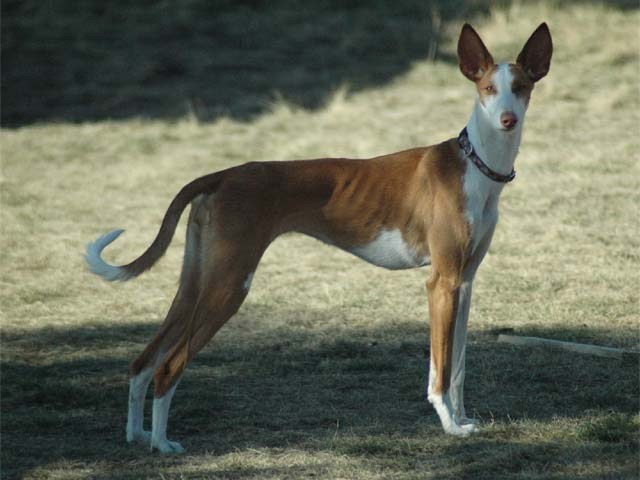
 Animalia Life
Animalia Life